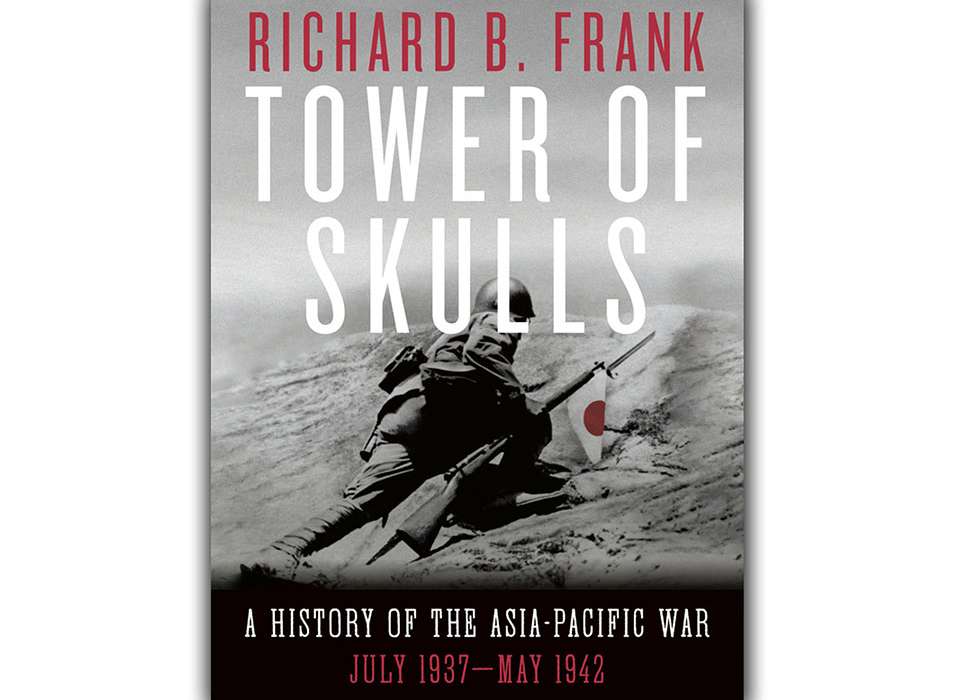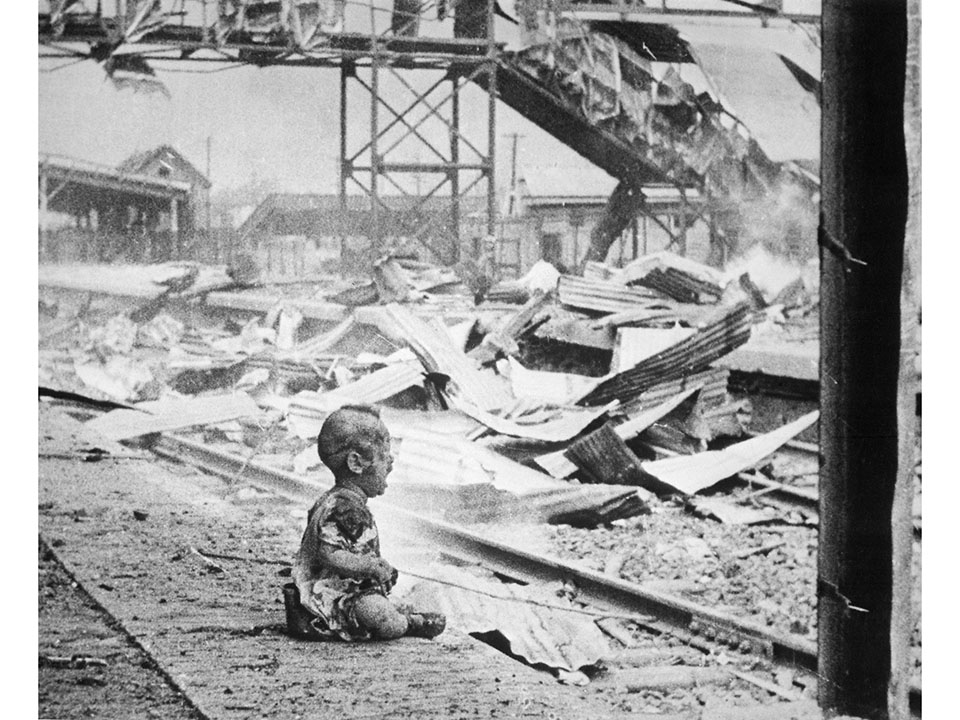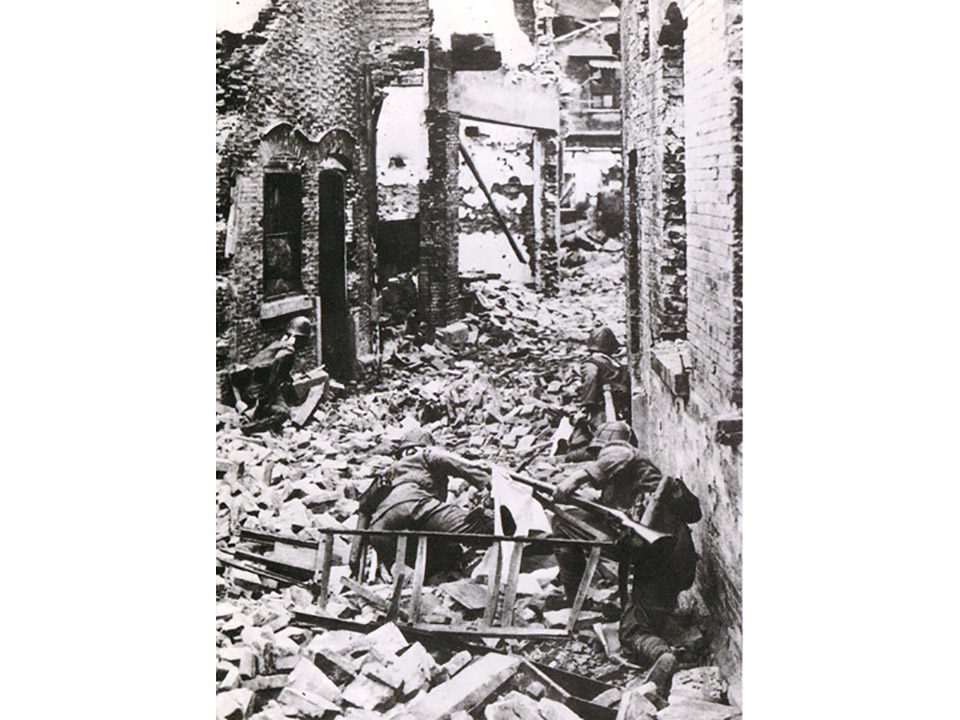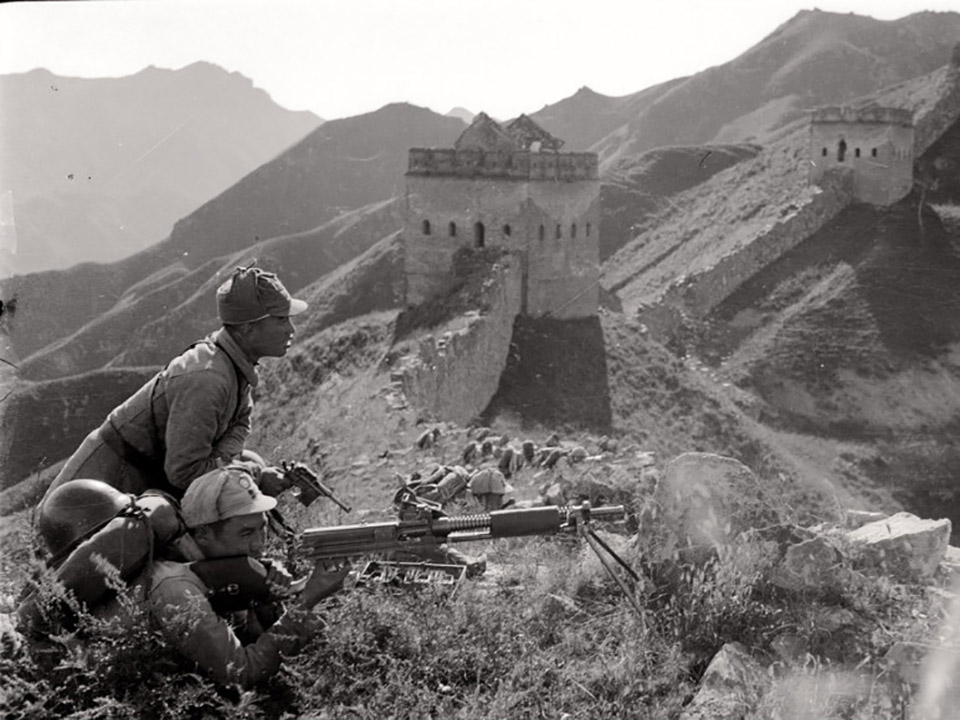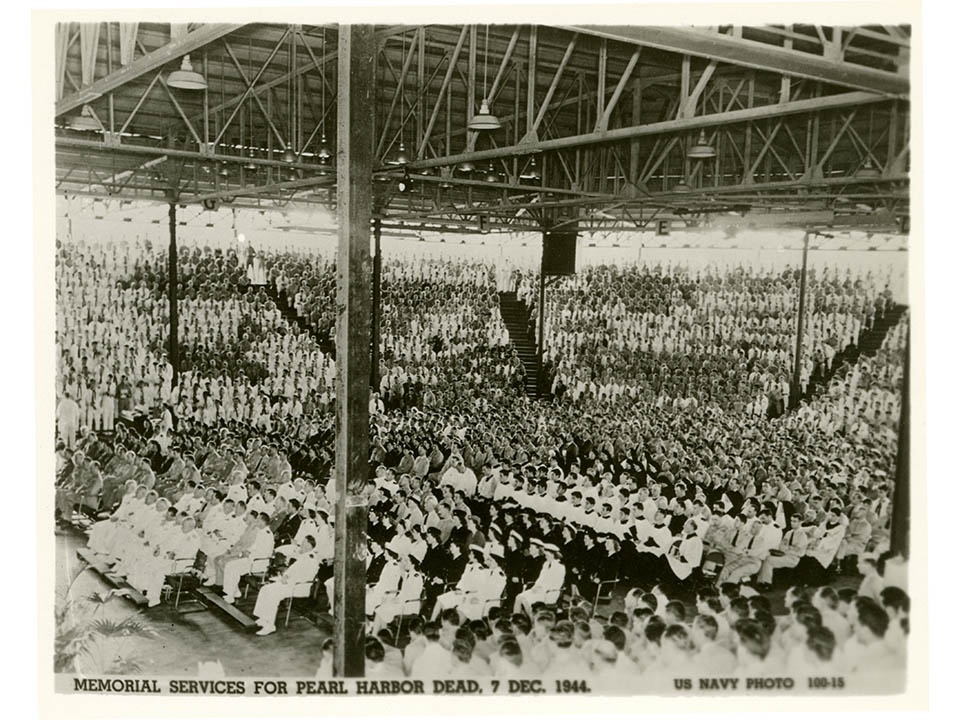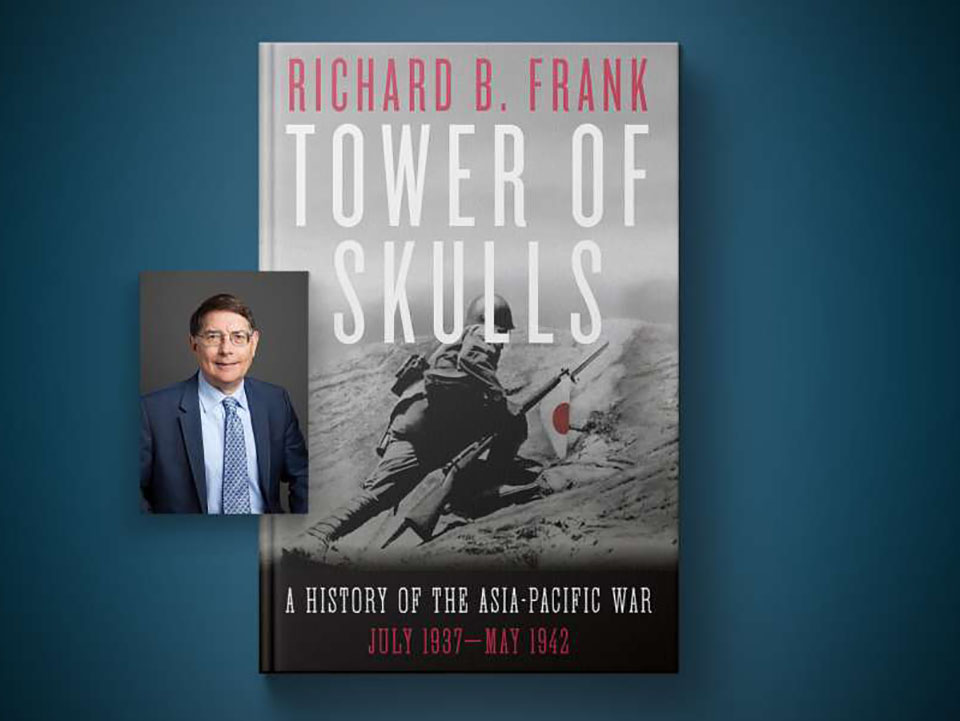This interview with Richard B. Frank, author of Tower of Skulls: A History of the Asia-Pacific War Volume 1: 1937-1942, was conducted by Robert von Maier. Rich Frank is a Counselor at The National WWII Museum and a frequent speaker at our public events.
Q: While conducting research for your new book Tower of Skulls, what were some of the more surprising facts that you discovered about the Asia-Pacific War?
A: The single most surprising and shocking fact is the stupendous death toll. While there is some understanding of the horrendous numbers of dead in Europe, primarily due to the Holocaust, there is no grasp today in the US or throughout the West of the full horrors of the war in Asia and the Pacific. It is impossible to compile exact death figures for World War II as there were simply too many episodes where no accurate records exist. The best we can achieve are reasonable approximations. Using standard academic sources and favoring low-end ranges of estimated casualties, the toll in the Far East reached at least 25 million dead. Of this figure, perhaps six million were combatants—soldiers, sailors, and airmen—about five of six of this number were Chinese and Japanese. This yields 19 million noncombatant deaths, a ratio of three noncombatants to one combatant. This is worse than in Europe where the ratio at most was two to one. Finally, at the outside about 1 to 1.2 million noncombatant dead were Japanese. Thus, for every dead Japanese noncombatant there were 17 or 18 noncombatant deaths who were not Japanese, overwhelmingly other Asians—about twelve of them were Chinese. On a simple linear projection, some 4,000 Chinese noncombatants perished every day for eight years between 1937 and 1945. Acknowledgement of these or any part of these figures is shockingly rare to nonexistent in both the academic and popular historical literature.
Q: What does the concept of "Asia-Pacific War" mean and how does it differ from the "Pacific War?"
A: There are two fundamental and related distinctions between the "Asia-Pacific War" and the "Pacific War." The standard Western Second World War narrative in both academic and popular histories locates the beginning of World War II in the Far East as Japan's December 1941 attack on Pearl Harbor. That is customarily titled "The Pacific War." But heavy sustained fighting that marked the initiation of the "Asia-Pacific War" started with Japanese aggression in China in July 1937. That began a conflict properly titled "The Asia-Pacific War." The Pacific War is only a subpart of the much wider Asia-Pacific War.
Two words provide the other profound distinction between the two concepts: the dead. If you only considered deaths relating to the fighting between the United States and Japan, the death toll would be between three and 3.5 million. This constitutes only about twelve to 15 percent of the 25 million dead in the Asia-Pacific War. Further, the Pacific War framework excludes the vastly larger proportion of noncombatant dead who were not Japanese. Perversely this makes it appear as though the vast bulk of the noncombatant dead was Japanese. Revising our framework for understanding the non-European part of the Second World War as the Asia-Pacific War is not intended to ignore or dehumanize Japanese deaths. It simply acknowledges this event was much bigger than the Pacific War and it also installs a consistent a moral framework where we count all the dead and treat each one of the dead as sharing a common humanity.
Q: China's war with Japan passed from recognized importance during the Second World War into a sparsely covered topic in the decades thereafter. Why did this happen and is this changing?
A: After the victory of Mao Zedong and the Communists in 1949 during the Chinese Civil War and Chiang Kai-shek's flight to Taiwan, both regimes effectively sealed off the great bulk of wartime archival documents. Further, during the Mao era to 1976, the People's Republic of China officially downplayed the Second World War compared to the revolution and the civil war. These factors stymied the production of rigorous academic history that also serves as foundational to popular history.
For decades, the primary source of documents on China's war with Japan rested in Western archives heavily colored by the views of General Joseph W. Stilwell. Further, most Westerners relate back to Europe rather than Asia, so you did not have the same level of intrinsic audience interest as with Europe. A dramatic change has transpired over the last 15 to 20 years with the release of partial but still extensive Chinese archival records from both sides of the Taiwan Straits. Most conspicuously these include Chiang's diaries, which are transformative about the whole period. This new evidence has initiated and propels a fundamental revision of the previous narrative about China's role in World War II.
Q: How important was China's contribution in the Second World War?
A: Perhaps the most significant yet least recognized Chinese contribution to the Allied cause was political. China's refusal to quit the war despite huge human and material losses precluded Japan from effectively asserting it was fighting a race war on behalf of all Asians against Whites. As to actual combat participation, the now common severe denigration of China's military contribution is misplaced. From 1937 to 1942, the Chinese put up large-scale, mostly conventional, resistance to Japan. But the Chinese sustained massive casualties, consumed much of their stockpiled munitions, and lacked the industrial infrastructure and raw materials to produce domestically the wherewithal to continue large-scale conventional fighting. Further, the Japanese blockaded China's Pacific coast and then in May 1942 the Japanese cut the "Burma Road" from Burma to China severing China's last direct link to its allies. After that only a small trickle of supplies from India over high mountains reached China (a route popularly called "Over the Hump.") From that point it was unrealistic to expect the Chinese to sustain large-scale conventional battles. The forces built up under American General Joseph Stilwell were committed to Burma, not fighting in China.
Along with an undeniably diminished military effort, from at least 1943 the Nationalists became subject to sharp criticism for corruption and incompetence. This was valid in many respects, but official and journalistic accounts failed to acknowledge how this related to a collapsing economic situation and the incredible stresses created by tens of millions of refugees fleeing from Japanese occupied territory. The Japanese blockade of China and occupation of much of the most prosperous areas collapsed the Nationalist revenue base to sustain the war effort. Faced with the stark choice between surrender and continuing the war, the Nationalists chose to print money to maintain their resistance. This led to massive inflation that progressively undermined efforts and morale as well as igniting corruption at many levels. At the same time, the achievements of the Chinese Communist forces in guerilla warfare, though real, were grossly exaggerated and the underlying political program of the Chinese Communists was too often presented as far more benign than later events tragically proved, like "The Great Leap Forward." This changed the narrative to one that endured for about six or seven decades after the war grossly understating the Chinese and especially the Nationalist contribution to the Allied cause. Since about the beginning of the 2000s, primarily due to new archival information, we are restoring a far more accurate portrait of China's important contributions while not ignoring serious shortfalls.
Memorial Service for those killed at Pearl Harbor, December 1941. The National WWII Museum, Gift of Julian Dean, 2010.523.035
Q: The only major non-Western opponent the Allies fought was Japan. How did the war with Imperial Japan—the Asia-Pacific War—affect the conflict in Europe, and what are some of the important connections between the two?
A: The single most important direct connection between the Asia-Pacific War and the conflict in Europe transpired in the second half of 1941. In the last 10 days of July, Hitler's massive onslaught into the Soviet Union stalled. For the first time it appeared that the Soviet Union would not collapse as originally projected, but might remain an active combatant. Washington and London grasped the huge strategic implications of this, but they also recognized their extremely limited ability to buttress the Soviets directly at that point. What President Franklin Roosevelt and Prime Minister Winston Churchill did comprehend was that continued Chinese resistance was vital to tie Japan down and prevent that Axis nation from turning and delivering what they feared would be the final, lethal blow to Soviet resistance. Thus, as Canadian Prime Minister William Mackenzie King wrote after a session with President Roosevelt, "a break in Chinese resistance will probably mean a break in Russian resistance."
Conversely, the supreme Japanese strategic objective in 1941 was to escape the quagmire in which obdurate Chinese resistance had ensnared their forces. Japanese negotiators in the critical period from July to December 1941 demanded the United States agree either to impose a peace on China clearly signifying Japanese victory or to abandon all support for China with China's defeat to follow. The United States refused to bow to these demands because of the nexus between Chinese resistance to Japan and Soviet resistance to Germany. Though there were other connections between the European and the Asia-Pacific War from 1937 to 1945, this one towers above the others.
Q: Which military historians have had the most influence on your research and writing?
A: My first model was Samuel Eliot Morison—both his naval histories and his European voyages to America. Gerhard Weinberg is a stellar exemplar of staggering levels of research merged to acute analysis and clear writing. There is a lengthy list of other historians who have provided inspiration over a range of challenges and achievements in historical work, but that list is long, and I would not wish to omit anyone by oversight.
Q: In some quarters, the study of military history is downplayed or discouraged. What purposes are served by the serious study of Second World War history, and what advice can you give to aspiring military historians?
A: My colleagues in academic history consistently report two phenomena. First, that the current academy is, with some exceptions, indifferent or even outright hostile to the study of military history on various counts. Second, to the consternation of many of their colleagues, if you offer a course on the Second World War students will eagerly fill the classroom.
During my lifetime, military history has evolved from predominantly "drum and bugle" accounts emphasizing uniformed leaders, battles, and campaigns to now an almost limitless range of topics that gather other subsets of history like social, economic, or political history, into a wartime setting. War and particularly the greatest war of them all, the Second World War, is an endless tapestry of human stories involving individuals of all races, genders, nationalities, and stations in life facing challenges up to life or death situations. How these individuals react to those challenges provides a profound insight into our basic humanity and timeless lessons in living as individuals or collectively.
Q: What does the history of the Asia-Pacific War tell us about the present?
A: When war commenced in July 1937, the region I call the "Arc of Asia" ran from India in the west (which then included Pakistan and Bangladesh) eastwards across China to Japan and southeast to what is now Indonesia. This region contained over a billion people, about half the estimated 2.3 billion world population. Yet, within that region, there were only four nation states with some claim to sovereignty. Siam (soon known as Thailand) and Japan enjoyed true sovereignty. Mongolia was a Soviet vassal state that had no actual sovereignty. China had highly eroded sovereignty due to the depredations of Western powers and Japan. Everywhere else the norm was colonialism.
Today, that region still contains about half the world's population, but those people live primarily in 19 major sovereign nations, including the two most populous in the world, China and India. What happened between 1937 and 1945 in the Asia-Pacific War is not just remote history. It propelled in often complex ways the path to real sovereignty of each of those nations. In China, Mao Zedong later insisted that without the war Japan brought to China in 1937, he never would have triumphed in 1949 and given us the People's Republic of China (PRC) we encounter today (and by implication, this suggests no war in Korea or probably Vietnam.) Moreover, those events also are profoundly important in understanding the current relations of many of those nations, conspicuously China and Japan. In the PRC, the revival of official commemoration of the Asia-Pacific War is linked directly to validating the regime.
Meet the Author
Richard B. Frank is an internationally acclaimed historian of the Asia-Pacific War. He was an aerorifle platoon leader with the 101st Airborne Division in Vietnam and is the author of Guadalcanal and Downfall. He is a member of the Board of Presidential Counselors of The National WWII Museum.
Robert von Maier is Publisher and Editor-in-Chief at Brécourt Academic.
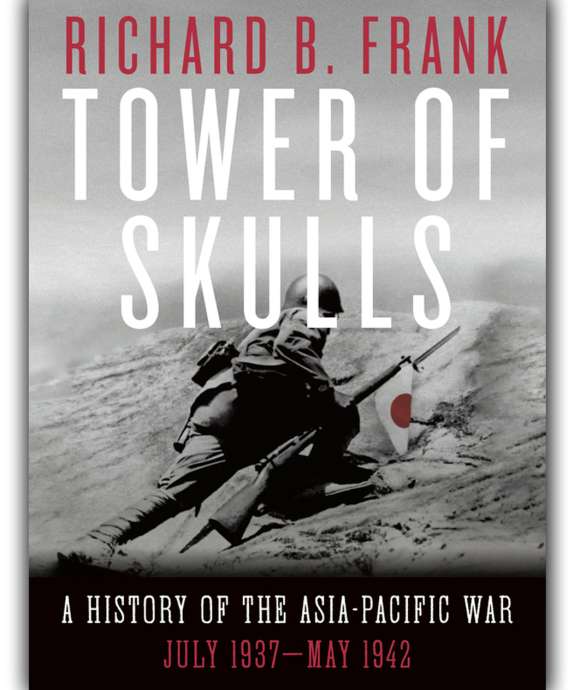
Tower of Skulls: A History of the Asia-Pacific War
Drawing on rich archival research and recently discovered documentary evidence, award-winning historian Richard B. Frank presents the first unified account of this titanic turmoil that gave birth to the world we live in now.
Cite this article:
MLA Citation:
APA Citation:
Chicago Style Citation:
